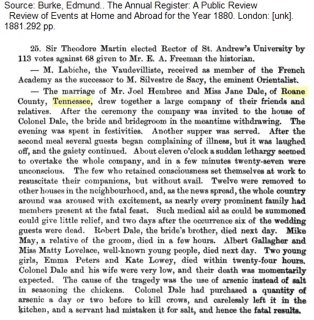1. number one for me is that the interface is roomy, so i'm not constantly having to scroll up and down after adding forty lines of text.
i know that blog entries are supposedly supposed to be short, that readers purportedly don't like reading large chunks of text on a browser. however, researchers slogging their way through a blogging interface is already challenging enough. if we're looking for a new resource or a quick link or tutorial, that's one thing. if we're looking for an entire family, that's quite another.2. my number 2 is likely number 1 for other genealogists: GOOGLE lets you collaborate in creating the documents and/or spreadsheets online. last week, GOOGLE combined the well-respected WRITERLY, which it had purchased, to its already free online spreadsheet program. that gave users a tested interface and the ability to collaborate and share documents online with ease.
i really appreciate the genealogy blog that gives me good, meaty-sized hunks of information in one entry; and so that's what i try to do. but that often means having to move up and down inside the textarea of the editor to double-check that i'm not repeating myself or to make sure i'm not leaving something important out. the typical blog interface is, as i've noted, forty lines long. then you've got to start scrolling to go back and check things. yech!
with GOOGLE documents and spreadsheets, i can have most of my entire screen in which to work. it's much like using a word processor. and, as in my blogging software interfaces, i can opt to edit my html when necessary and with ease. or not.
3. GOOGLE stores the documents you create free for you. if you want to "publish" to the web, GOOGLE lets you do that and stores the documents for you.
you can also simply store the documents you create online with compliments of GOOGLE. although there is a limit for uploading images to use in your documents, there is no set storage or transmission limit for the texts you create. you can view the terms of use for GOOGLE Docs & Spreadsheets | here |.4. docments created with the online software may be saved and downloaded in many different, popular formats :
5. you can import existing documents of 500 k or less from your hard drive in the same popular formats mentioned above. the following is information about size limits for documents, images, and spreadsheets from the help pages for the software:
Each document can be up to 500K, plus up to 2MB per embedded image.6. you can upload and store images - free - to use inside your documents. (see item 5 above for some information and limits). note: i'm sure there must be some total limit (i.e. for all your images combined), as well, but if there is, i haven't found it yet.
Each spreadsheet can be up to 10,000 rows, or up to 256 columns, or up to 50,000 cells, or up to 20 sheets -- whichever limit is reached first.
You can import file sizes up to approximately 1 Mb in .xls or .odf format
7. there is an export wizard for all popular blog interfaces. you can export to a sponsored blog (like this one at blogspot) or to your own blog on your own domain. if you are wanting to export to just one blog, you need only enter the export settings once. if you have multiple blogs, you'll have to change the wizard data for each blog each time.
and - need i say it? you can just create any kind of genealogy document online, collaborate on it online, and then let each collaborator do whatever he or she pleases with it.
you don't have to have to have a blog to find this service useful and easy. and, no, this is not a sponsored plug....
WANT AN EXAMPLE - or TWO?
1. well, i have created a document about my great-grandmother DICA ANN "DICY" (SMITH) GILES using google documents & spreadsheets and am storing it on google's servers. you can view it
| here |
2. i also exported it using the blog export function built into the google docs & spreadsheets interface, and so that same document can be viewed on my tn type.com blog
| here |.


